Everything She Ever Wanted: A True Story of Obsessive Love, Murder, and Betrayal Read online
Page 2
Ronnie adored his mother; there were no lengths to which he wouldn't go to please her. If she voiced a wish, Ronnie would carry out her bidding. His devotion didn’t stop him from getting into trouble, like getting drunk and wrecking cars and doing other things not sanctioned by the law, but he didn’t want any of it to disturb his mother. If she was hurting too bad and needed pain medication, Ronnie always found a way to get it for her. If someone wounded her feelings and needed a reminder not to do that, Ronnie took care of that too.
Not everything in their new life went smoothly, of course—but Tom was so happy nothing much bothered him. On Christmas Day 1973, he went to take a big gelding out of the barn and it came out running full tilt. He held on, but even his weight didn’t stop the spooked horse and it dragged him along, fracturing his right collarbone. For a blacksmith, it was a bothersome injury and kept him off work.
Pat was jealous of Tom’s wife, whom everybody called “Little Carolyn” since his mother’s name was Carolyn too. Of course, she was called “Big Carolyn.” If the truth be told, Tom was kind of proud that Pat was so jealous of him, even though, Lord knew, she had no cause to be. Little Carolyn was pretty, but she was nothing compared to Pat. Pat was a perfect lady and was beautiful and fiery and her kisses tasted like honey. He was eager to get his divorce.
Pat refused to have anything around her that might remind Tom of Little Carolyn. “I remember I came home once,” Tom said later, “and something came flying out the door and shattered on the sidewalk. It was a brand-new J. C. Penney’s radio. It had been in my bedroom and it belonged to me, but as far as Pat was concerned it belonged to Carolyn, and she wasn’t having anything of Carolyn’s in the house. She just pitched it out. She hated Carolyn so bad, she even tried to say once that my children weren’t mine—that they were my father's children, that they’d had an affair while I was married to Carolyn.”
Tom didn’t believe Pat meant that about his kids. She often talked about bringing Russ and Sherry to live with them and how she would be their mother. It was just that Pat was so high-strung that she sometimes said things she didn’t mean.
Still, she wouldn’t allow Tom to display pictures of his children in her house.
The divorce from Little Carolyn dragged on and on, and Pat cried with frustration. She wanted to be married to Tom, not just living with him. But a hearing in early spring of 1974 ended, not in Tom's final decree, but in another postponement. After realizing that Tom and Little Carolyn Allanson were far, far apart on monetary agreement, the judge said, “I will not grant a divorce at this time.” Hearing that, Pat turned white and dug her fingernails into Tom’s arm. She made it out of the De Kalb County Courthouse but she fainted on the front lawn. Someone screamed and paramedics were summoned. Gradually she came around and Tom half led, half carried her out of the crowd that had gathered. He wondered how much more of this kind of strain she could take.
And then, suddenly, it was all right, as if Pat and Tom’s love was somehow blessed. On May 9, 1974, Tom had yet another divorce hearing. He expected one more delay and the hearing seemed mostly an irritant. Tom and Pat were scheduled to be at a Morgan horse show in Stone Mountain, Georgia, that evening.
Pat had decreed that they would go to Stone Mountain as “Scarlett and Rhett” and had busied herself making their costumes. Dressing up and slipping into another persona never failed to cheer her up; it was almost as if she could step out of her own life into an existence she craved. And everyone always raved about how clever she was as a seamstress. She knew she and Tom would be the hit of the Stone Mountain show. She had chosen royal blue as the Kentwood Morgan Farm’s show colors, and their chairs, tents, and blankets all matched.
Pat’s gown was white with a sweetheart neckline, puffed sleeves, and a voluminous hoop skirt. She would wear white gloves, white feathers in her hair, and she would suspend her favorite gold-rimmed cameo from a moiré ribbon around her slender neck. When she posed for Tom in her costume, he stepped up and circled her tiny waist with his two hands. She had never looked more beautiful, and she knew it.
Tom felt a little foolish when he saw his costume, but he shrugged and tried it on: a black cutaway coat with tails, a white satin vest over a shirt with ruffles at the neck and wrists, and a top hat. Pat even had a fake moustache for him to stick on. Standing in front of a long mirror together, they looked as if they had just returned to Zebulon through some dusty curtain in time. They also looked incredibly like Scarlett and Rhett, and Pat was elated.
They were both thrilled beyond words when Tom’s divorce, at long last, was granted that very day. They quickly reserved a chapel at Stone Mountain for their wedding. But nothing in Pat’s life ever seemed to happen without fanfare. Her wedding to Tom was no exception. It made headlines. A slightly sentimental reporter for the Griffin Daily News related that Pat and Tom had not only met “cute,” they had married “cute.” Under the headline: THEY WERE DETERMINED TO GET MARRIED, a three-column spread described the nuptials:
“Pat Radcliffe and Tom Allanson had an unusual wedding, to say the least . . .
Pat had explained to the reporter that she and Tom had known each other for fifteen years—ever since the day she had called Tom as a last minute replacement for her regular blacksmith. They had not gotten along at all, Pat laughed, since she was a specialist in Morgan horses and Tom preferred quarter horses. However, she had won him over.
“When Pat was stricken and confined to bed, Tom became a regular caller,” the reporter wrote. “And from that came wedding bells. ‘She moves about so much that it was the first time I had to catch her,’ Tom beamed the other day.”
The Griffin feature story did not mention that Tom’s divorce was brand spanking new. It didn’t mention any other marriages for either the bride or groom, only the romantic and chaotic details of May 9, 1974. Pat and Tom had engaged the chapel for a 2:00 p.m. wedding, and rented “one motel room” for that night.
“Tom was taking a van loaded with horses to the show when he had a blowout. Another tire went and he was stranded on a busy interstate near Atlanta,” the paper reported. “He made his way to a service station. As chance would have it, someone passing by knew where he could get two large tires for the van.
“Tom’s bride-to-be was waiting at the chapel in Stone Mountain when the ceremony time arrived. He sent word that he had run into trouble and would be late. By the time word reached Pat, she already had guessed that something had gone wrong. The ceremony was canceled.
“When Tom finally got the van repaired and to the horse show, word had spread among show people about what had happened. They suggested since the show tents already were beautifully decorated, that one of them be used for the wedding. Tom and Pat agreed. The Rev. William Byington, a Baptist minister, was called. He said that in all of his many years in the ministry, he never had been called on to perform a wedding ceremony under such circumstances. But he agreed to do so. With show people looking on in one of the tents, he asked Tom and Pat to pledge their love to each other in a standard and simple ceremony.”
Pat managed to get in several plugs for their new Kentwood riding facilities and mentioned that she would continue teaching riding at Woodward Academy on the Riverdale campus. She and her horses would commute both ways daily.
“But back to the wedding story," the Griffin newspaper continued, obviously pleased with such fascinating new residents of nearby Pike County. “The couple stopped at Western Sizzlin’ Steak House for a Sunday night meal. When they had finished, Tom took the van and his bride was to follow. He pulled onto the expressway and moved slowly into traffic. He checked the rear view mirror to look for the vehicle his wife was driving. Tom heard a noise that sounded like a wreck. He stopped.
“Someone had had a collision with his wife and she lay injured in the vehicle. She was taken to the Griffin-Spaulding Hospital for examination and treatment. She was strapped up and told it would be all right for her to go home. But the pain in her shoulder persisted. Next day, she
went to an Atlanta hospital, where it was learned she had a broken collarbone. She came home in a cast and has been in one since . . . The newlyweds have managed to smile through it all and are looking forward to establishing their farm home here.”
The picture accompanying the piece was, of course, perfect for the story. Pat and Tom, as Scarlett and Rhett in their antebellum finery, smiled for the camera as they were united in marriage in a huge flower-bedecked building: the lovely slender woman with feathers in her hair and an ivory fan open in her small gloved hands, the huge man with the tremendously proud grin.
Why Pat had pulled directly into the path of an oncoming car remained a mystery. She might have been blinded by the sun, but she was probably only careless. She was not a particularly good driver, and she was easily distracted. Driving a truck and pulling a horse trailer behind cut most of her side and rear vision. She may well have been exhausted after three whirlwind days at the Stone Mountain horse show, but it was an exhilarating fatigue; she had gone from being “left at the chapel” to being a bride whose wedding was the focal point of the whole show. It had turned out better than even she could have envisioned.
It was even kind of romantic that she and Tom had both suffered broken collarbones—they shared everything. His own injury was long since healed, but Tom remembered how painful it had been, and he was especially tender with Pat, never letting her lift anything heavy or reach for something if he could get it for her.
Gradually, she resumed her riding lessons, and Tom divided his time among his work at Ralston Purina, shoeing horses, and fixing up their place. As their fortunes increased, they planned to buy more and more Morgan horses. They would have the finest Morgan stables in the state of Georgia. They already had the finest marriage. That, Tom was sure of. “Two human souls joined together for life . . .”
CHAPTER 3
***
There was only one cloud over their happiness. While Pat’s family was pleased with her marriage to Tom, and Tom’s grandparents found Pat a sweet and thoughtful woman, his parents were another story entirely. Walter and Big Carolyn Allanson wanted nothing to do with Tom’s third wife. In fact, they had sided with Tom’s ex-wife during the divorce, and resisted all his efforts to let them see what a fine woman Pat was.
Hoping to ease the situation a little, Margureitte Radcliffe made overtures to the Walter Allansons. She called and invited them to join her and Colonel Radcliffe for dinner at the officers’ club at Fort McPherson. “They were not interested,” Margureitte later said, “and I thought, How can they not be interested when they do not know us?”
Margureitte, who always prided herself on her sense of propriety and her impeccable social grace, was shocked to find Tom’s parents so hostile. Using a phrase she often sprinkled through her conversations, she sighed, “I never in this whole wide world thought people could act like that.”
Then Tom lost his job at Ralston Purina, and he suspected it was his father’s fine hand interfering in that too. He tried to make up for his lost salary with his blacksmith work, but that caused a bit of a problem in his relationship with Pat.
He was surprised to find that his bride was not only jealous of his ex-wife, she was jealous of any woman who might cast an appreciative eye on him. She plain didn’t want him around other women, not unless she was with him. He tried to explain to her that horse barns were not exactly prime spots to find other women and that he spent 95 percent of his life around men, but it did no good. Pat insisted on accompanying Tom on his farrier rounds.
He was proud of her, but she sure put a damper on male conversation. Instead of jawing easily with the good old boys who hung around as he shod horses, Tom worried whether Pat was comfortable and feeling okay. Her presence made his customers uneasy too. But he loved her too much to ever feel smothered by her attention. If she wanted to be with him, then she was always welcome.
He wouldn’t have dreamed of telling her to stay home.
Lavished with Tom’s love, Pat’s health improved—at least enough so she was able to help on the elaborate grounds of Kentwood; she could manage the riding mower. She gave a few horseback lessons, and they sometimes rented their surrey or the sulky and their horses for shows and parades. She and Tom went often to horse shows. But they both soon realized that they would have to budget tightly and work harder to make Kentwood the kind of place they visualized. Pat wanted everything now, and Tom had to gentle her down and explain they just couldn’t afford all that—a bigger barn, a grandstand for horse shows, more roses, chandeliers, more horses and more buggies, more elegant livery for their drivers.
All of it took money, and the money would have to come from somewhere outside their household. Without his job at Ralston Purina and with the broken collarbone that had kept him from shoeing horses for a couple of months, Tom had lost ground financially. Now he could work, but his blacksmith business was going downhill instead of up—mostly because of Pat’s insistence that she always be present, or because he so often had to drop everything and rush home when she had a spell of fainting.
Tom could never tell when Pat was going to pass out. Sometimes she would be driving their jeep around the place and she would just faint at the wheel and fall out the driver’s door; sometimes he would race home to find her lying by the telephone. No, it was impossible to even think of Pat working full-time; he didn’t want her to do that anyway. He wasn’t even sure she should be giving so many riding lessons.
Tom wanted to get his grandparents moved onto the place too. He had promised to do that, and that promise, he thought, should be honored before the big expansion of Kentwood.
But even with worries about money and feuds with his parents, Tom was happy. When he and Pat saddled up their horses and rode over their own land, he thought he was probably the luckiest man who had ever lived. Sometimes Pat wore one of her costumes for a ride around their place, and the sight of her with the burgeoning spring trees behind her was enough to make him want to weep with joy. They called each other “Sugar” and eventually that was abbreviated to “Shug.” They had special songs and little sayings that were just for them to know about. “First things first, Shug,” they would say. They would see to what was important and the rest of their plans would fall into line.
***
Tom had never told Pat how bad things were with his parents—especially with his father. Walter Allanson could have a crude mouth, and he had used it to talk about Pat. Although he had never met her, his father detested Pat. When Tom was first living with her, he had told his son she was a slut, a woman whose bad reputation was common knowledge. “She’ll lie down with any man with a truck and a horse trailer. You damn fool, can’t you see that?”
Pat had had affairs that were no secret, Walter Allanson had pointed out. If Tom had anything to do with her, he was a bigger idiot than he had already proved he was. “Stay away from that, Tommy,” Walter had argued. “That’s bad stuff there.”
Of course, his father’s warnings had only made Tom want Pat more. It wasn’t true what he said about Pat; Tom didn’t believe a word of it. That was his father’s way of ruining things for him, the way he always had managed to tarnish those things that meant the most to him. Pat would be heartsick if she heard what Walter Allanson had said about her, and Tom wasn't ever going to tell her.
It was difficult though, because Pat kept urging Tom to make peace with his family. She suspected—correctly—that there was money in Tom’s family, even though—except for his aunt Jean Boggs, Walter’s sister—they lived rather austerely. Tom had told her that Paw was shrewd and had hidden money stashes all over his place on Washington Road.
The way Pat understood it, Paw had sold the back part of his land to Tom’s father, and Walter had seen to getting it zoned for multi-dwellings, then sold it to builders who had put up the Forest Apartments, the Gray Estates, and the Club Candlewood Apartments. There had to have been a great deal of money coming into the family from those transactions. Tom didn’t seem to care a hoot a
bout it, but he was the Allansons’ only son, and Paw and Nona’s favorite grandson, and eventually, she figured, it would all belong to him. Heaven knows they were never going to make Kentwood what it should be if Tom didn’t get his rightful inheritance.
Tom’s aunt Jean Boggs and her husband, Homer, had a fine house in East Point and she dressed as if she were a wealthy woman. Tom told Pat that Jean hadn’t had anything to do with her brother Walter after some fuss over their father’s property—not for seven or eight years. She had children too, but they hadn’t been raised by the elder Allansons, the way Tom was; he was almost like Paw and Nona’s own son.
Now that she and Tom were married, Pat was sure Walter and Big Carolyn Allanson would accept her. She came from the Silers on her mother’s side, a fine old family. She had parents to be proud of—Papa was, after all, a retired colonel. Pat considered herself far superior to Tom’s ex. She was a lady, whose children were riding champions, a lady who had met Governor Jimmy Carter and the Japanese royal family personally. The Allansons had to recognize that and be grateful that she had married their son. It would all work out.
Tom wasn’t optimistic about that happening anytime soon. He knew how mule-headed his father could be, but it was impossible for him to explain to his bride why they couldn’t go calling on his parents. As much as he loved her, he had already learned that Pat had a way of aggravating people, of speaking without thinking and saying the wrong thing at the wrong time. And then there was her appearance. Personally, he loved the way she looked and dressed, but seeing Pat through his father’s eyes, he shuddered. She showed too much leg and too much bosom. The little old-fashioned clips she used to hold her halter tops together had a way of working loose. She was a magnificent-looking woman, but the sight of her would only give his dad more ammunition to talk against her.

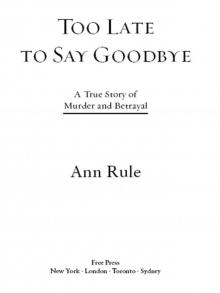 Too Late to Say Goodbye: A True Story of Murder and Betrayal
Too Late to Say Goodbye: A True Story of Murder and Betrayal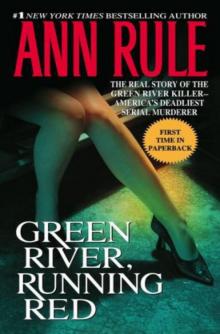 Green River, Running Red
Green River, Running Red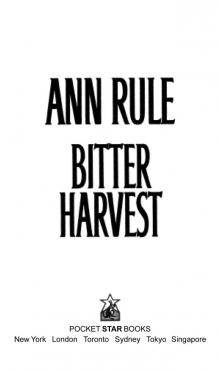 Bitter Harvest
Bitter Harvest Dead by Sunset: Perfect Husband, Perfect Killer?
Dead by Sunset: Perfect Husband, Perfect Killer?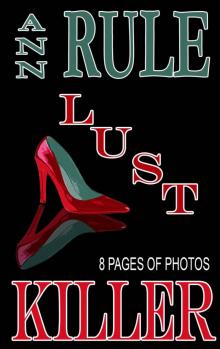 Lust Killer
Lust Killer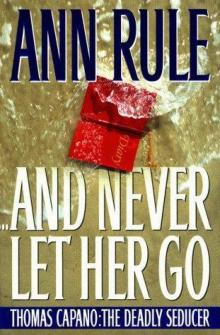 And Never Let Her Go: Thomas Capano: The Deadly Seducer
And Never Let Her Go: Thomas Capano: The Deadly Seducer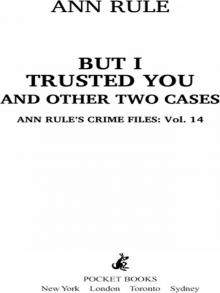 But I Trusted You and Other True Cases
But I Trusted You and Other True Cases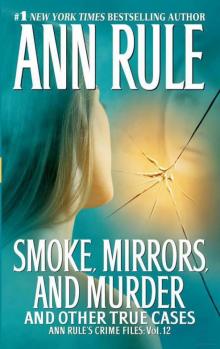 Smoke, Mirrors, and Murder and Other True Cases
Smoke, Mirrors, and Murder and Other True Cases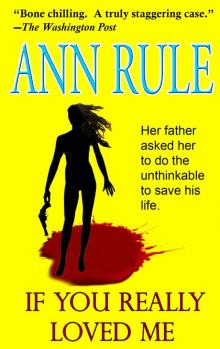 If You Really Loved Me
If You Really Loved Me Kiss Me, Kill Me and Other True Cases
Kiss Me, Kill Me and Other True Cases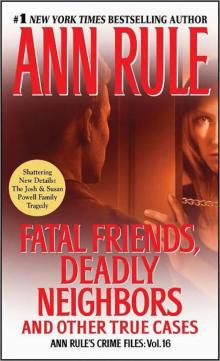 Fatal Friends, Deadly Neighbors and Other True Cases
Fatal Friends, Deadly Neighbors and Other True Cases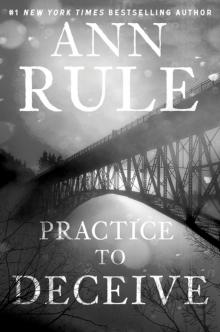 Practice to Deceive
Practice to Deceive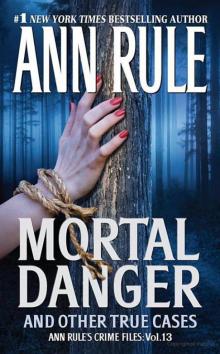 Mortal Danger and Other True Cases
Mortal Danger and Other True Cases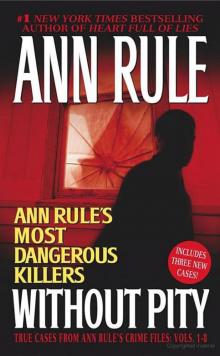 Without Pity: Ann Rule's Most Dangerous Killers
Without Pity: Ann Rule's Most Dangerous Killers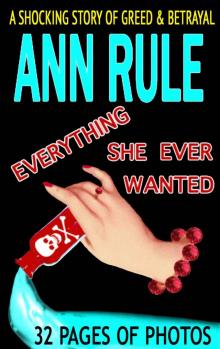 Everything She Ever Wanted
Everything She Ever Wanted A Fever in the Heart and Other True Cases
A Fever in the Heart and Other True Cases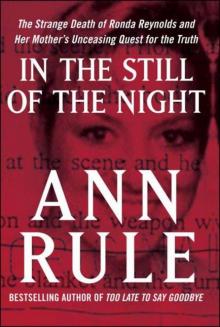 In the Still of the Night
In the Still of the Night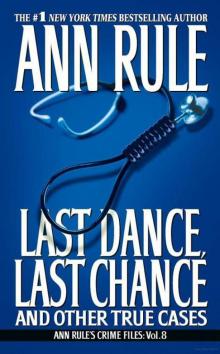 LAST DANCE, LAST CHANCE - and Other True Cases
LAST DANCE, LAST CHANCE - and Other True Cases A Rage to Kill
A Rage to Kill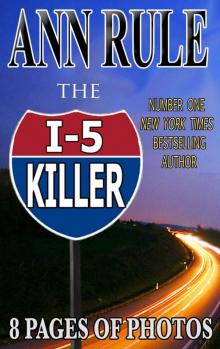 The I-5 Killer
The I-5 Killer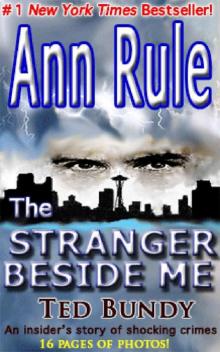 The Stranger Beside Me
The Stranger Beside Me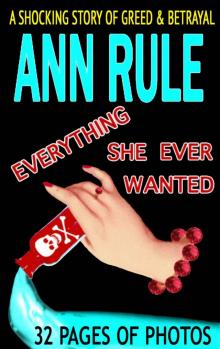 Everything She Ever Wanted: A True Story of Obsessive Love, Murder, and Betrayal
Everything She Ever Wanted: A True Story of Obsessive Love, Murder, and Betrayal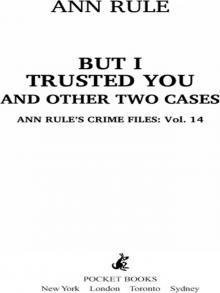 But I Trusted You
But I Trusted You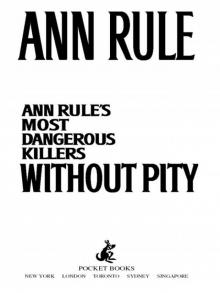 Without Pity
Without Pity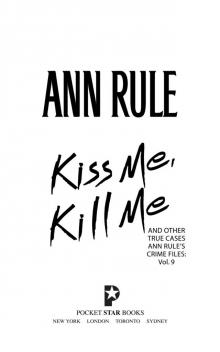 Kiss Me, Kill Me
Kiss Me, Kill Me Too Late to Say Goodbye
Too Late to Say Goodbye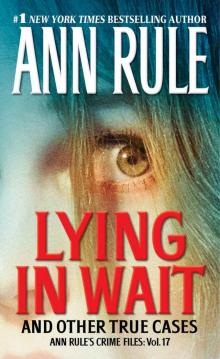 Lying in Wait
Lying in Wait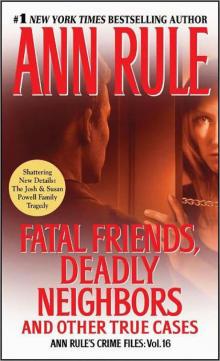 Fatal Friends, Deadly Neighbors
Fatal Friends, Deadly Neighbors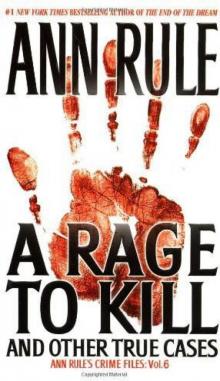 A Rage to Kill: And Other True Cases
A Rage to Kill: And Other True Cases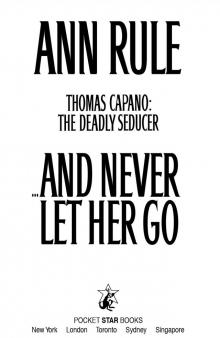 And Never Let Her Go
And Never Let Her Go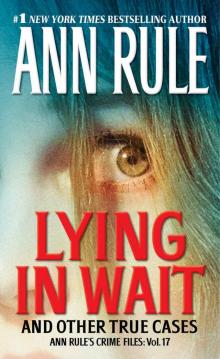 Lying in Wait Ann Rule's Crime Files Vol.17
Lying in Wait Ann Rule's Crime Files Vol.17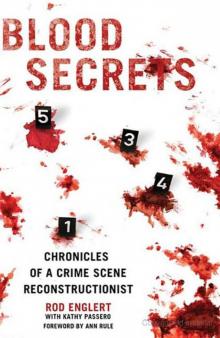 Blood Secrets: Chronicles of a Crime Scene Reconstructionist
Blood Secrets: Chronicles of a Crime Scene Reconstructionist No Regrets
No Regrets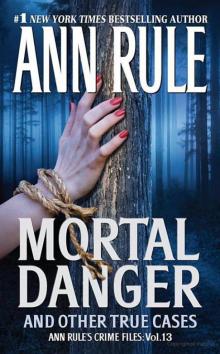 Mortal Danger
Mortal Danger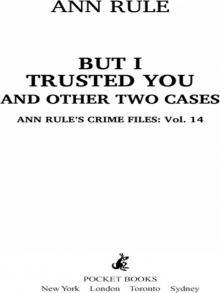 But I Trusted You: Ann Rule's Crime Files #14
But I Trusted You: Ann Rule's Crime Files #14 Empty Promises
Empty Promises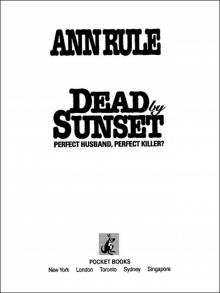 Dead by Sunset
Dead by Sunset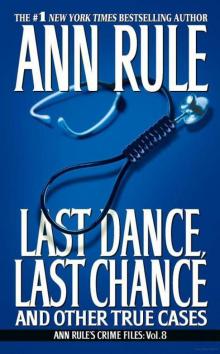 Last Dance, Last Chance
Last Dance, Last Chance Don't Look Behind You
Don't Look Behind You